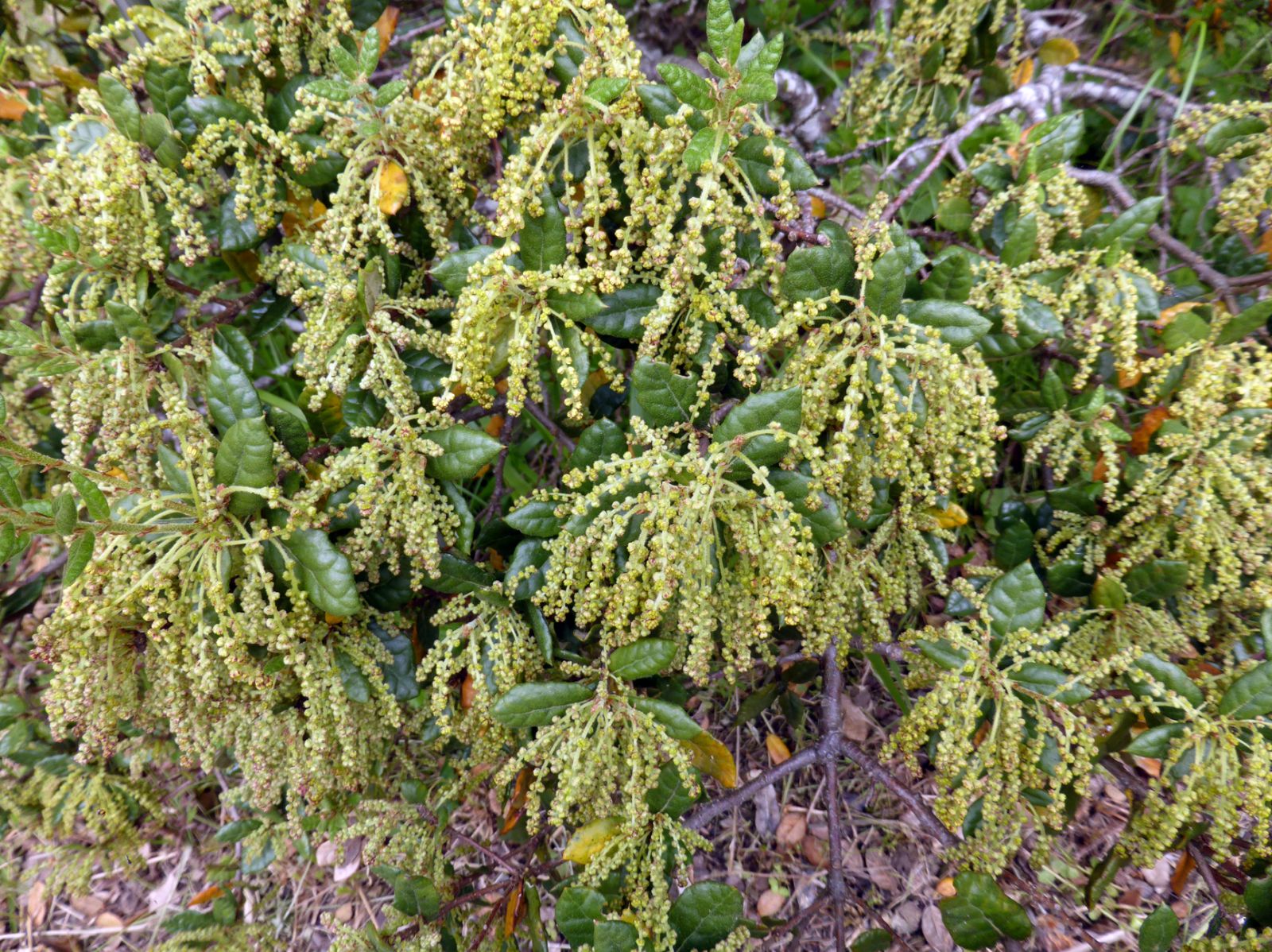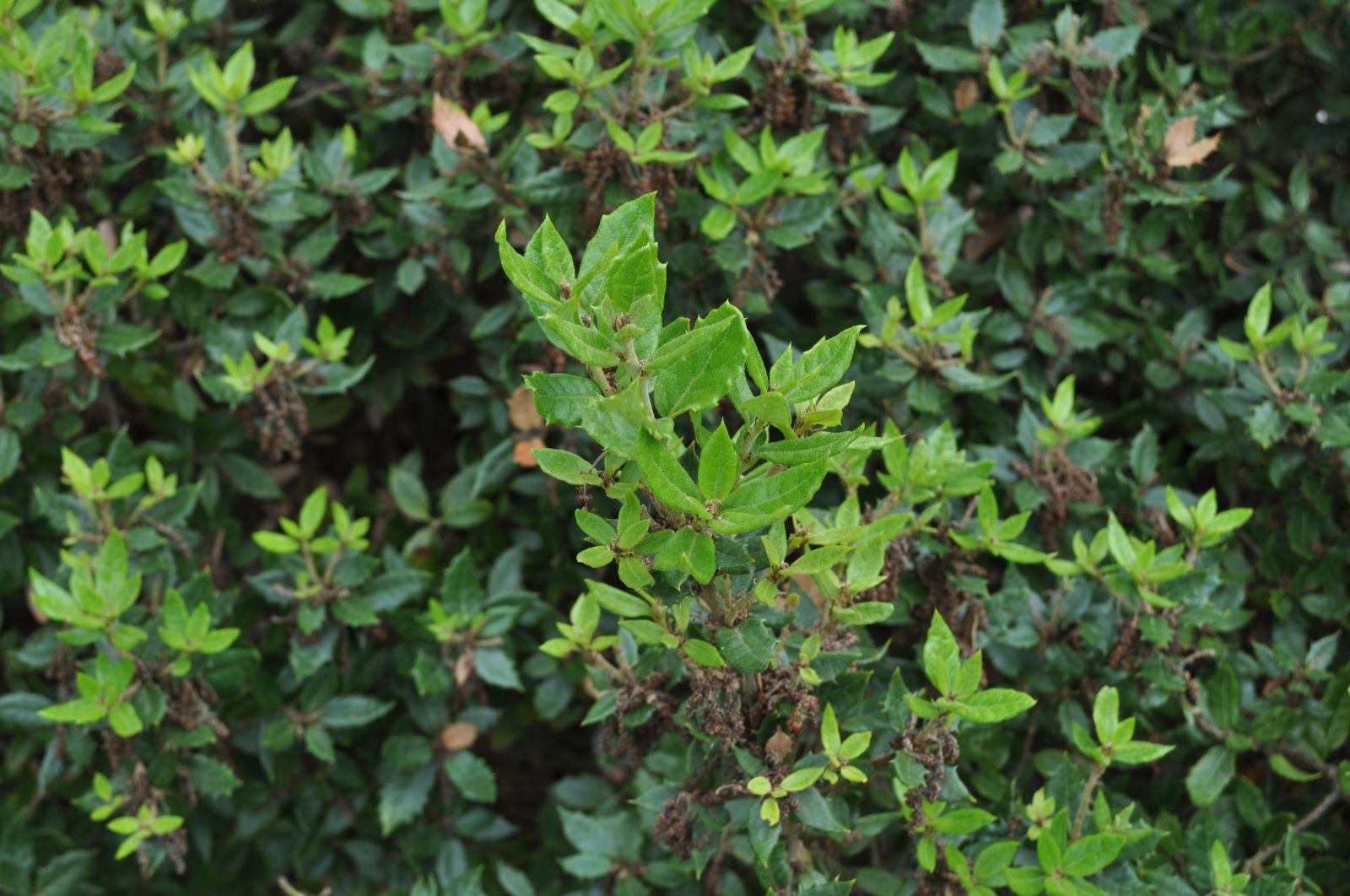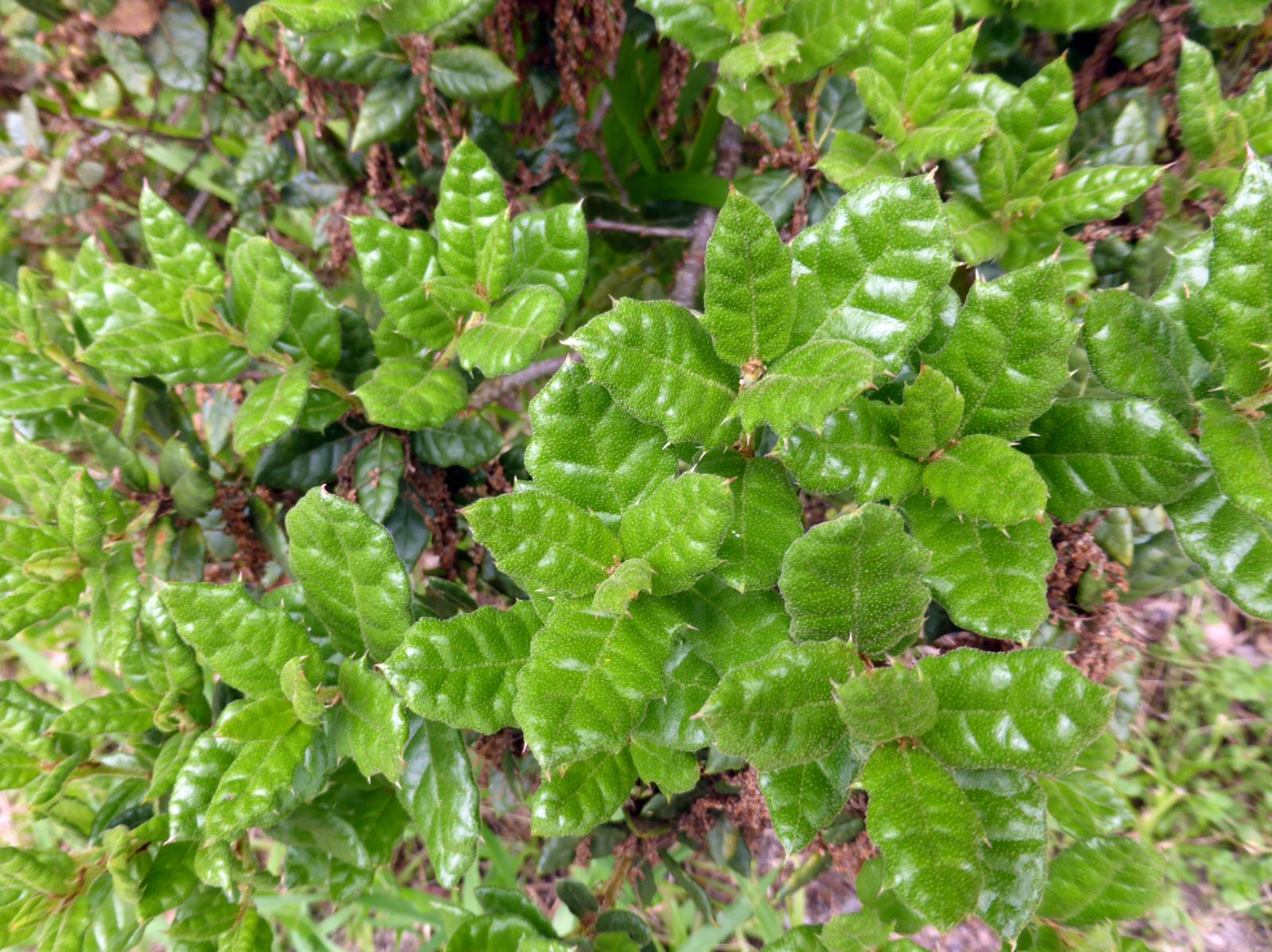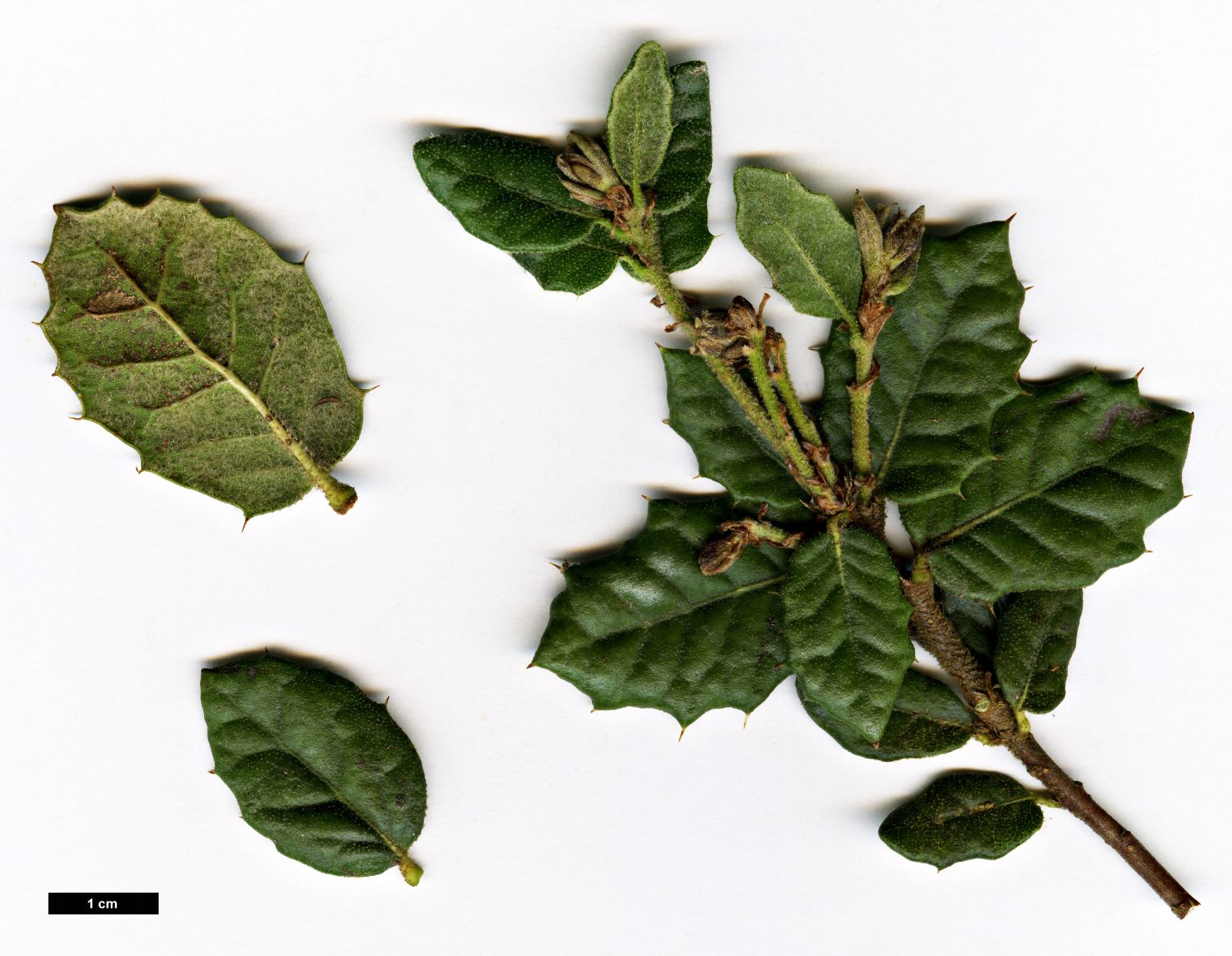Quercus monimotricha
Sponsor
Kindly sponsored by
The Trees and Shrubs Online Oak Consortium
Credits
Allen Coombes & Roderick Cameron (2021)
Recommended citation
Coombes, A. & Cameron, R. (2021), 'Quercus monimotricha' from the website Trees and Shrubs Online (treesandshrubsonline.
Genus
- Quercus
- Subgen. Cerris, Sect. Ilex
Other taxa in genus
- Quercus acerifolia
- Quercus acherdophylla
- Quercus acrodonta
- Quercus acuta
- Quercus acutifolia
- Quercus acutissima
- Quercus afares
- Quercus affinis
- Quercus agrifolia
- Quercus alba
- Quercus aliena
- Quercus alnifolia
- Quercus aquifolioides
- Quercus arizonica
- Quercus arkansana
- Quercus aucheri
- Quercus augustini
- Quercus austrina
- Quercus × auzendei
- Quercus baloot
- Quercus bambusifolia
- Quercus baronii
- Quercus bicolor
- Quercus brantii
- Quercus buckleyi
- Quercus canariensis
- Quercus canbyi
- Quercus candicans
- Quercus castanea
- Quercus castaneifolia
- Quercus cerris
- Quercus chenii
- Quercus chrysolepis
- Quercus coccifera
- Quercus cocciferoides
- Quercus coccinea
- Quercus conspersa
- Quercus crassifolia
- Quercus crassipes
- Quercus delavayi
- Quercus dentata
- Quercus deserticola
- Quercus dolicholepis
- Quercus douglasii
- Quercus dumosa
- Quercus durifolia
- Quercus eduardii
- Quercus ellipsoidalis
- Quercus emoryi
- Quercus engelmannii
- Quercus engleriana
- Quercus euboica
- Quercus eugeniifolia
- Quercus fabri
- Quercus faginea
- Quercus falcata
- Quercus floribunda
- Quercus frainetto
- Quercus franchetii
- Quercus fruticosa
- Quercus fusiformis
- Quercus gambelii
- Quercus garryana
- Quercus geminata
- Quercus georgiana
- Quercus germana
- Quercus gilliana
- Quercus gilva
- Quercus glabrescens
- Quercus glauca
- Quercus graciliformis
- Quercus gravesii
- Quercus griffithii
- Quercus grisea
- Quercus guyavifolia
- Quercus hartwissiana
- Quercus hemisphaerica
- Quercus × hispanica
- Quercus hondae
- Quercus hypargyrea
- Quercus hypoleucoides
- Quercus ilex
- Quercus ilicifolia
- Quercus imbricaria
- Quercus incana
- Quercus infectoria
- Quercus insignis
- Quercus ithaburensis
- Quercus kelloggii
- Quercus × kewensis
- Quercus kiukiangensis
- Quercus laceyi
- Quercus laevis
- Quercus lamellosa
- Quercus lanata
- Quercus lancifolia
- Quercus laurifolia
- Quercus laurina
- Quercus × leana
- Quercus leucotrichophora
- Quercus × libanerris
- Quercus libani
- Quercus lobata
- Quercus lobbii
- Quercus lodicosa
- Quercus longinux
- Quercus longispica
- Quercus look
- Quercus × ludoviciana
- Quercus macranthera
- Quercus macrocalyx
- Quercus macrocarpa
- Quercus macrolepis
- Quercus marilandica
- Quercus mexicana
- Quercus michauxii
- Quercus mongolica
- Quercus montana
- Quercus morii
- Quercus muehlenbergii
- Quercus myrsinifolia
- Quercus myrtifolia
- Quercus nigra
- Quercus × numidica
- Quercus oblongifolia
- Quercus obtusata
- Quercus oglethorpensis
- Quercus oxyodon
- Quercus pagoda
- Quercus palmeri
- Quercus palustris
- Quercus pannosa
- Quercus parvula
- Quercus petraea
- Quercus phellos
- Quercus phillyreoides
- Quercus planipocula
- Quercus poilanei
- Quercus polymorpha
- Quercus pontica
- Quercus prinoides
- Quercus pubescens
- Quercus pyrenaica
- Quercus rehderiana
- Quercus reticulata
- Quercus robur
- Quercus rotundifolia
- Quercus rubra
- Quercus rugosa
- Quercus rysophylla
- Quercus sadleriana
- Quercus salicina
- Quercus sartorii
- Quercus × schneideri
- Quercus schottkyana
- Quercus semecarpifolia
- Quercus senescens
- Quercus serrata
- Quercus sessilifolia
- Quercus setulosa
- Quercus shumardii
- Quercus sinuata
- Quercus spinosa
- Quercus stellata
- Quercus stenophylloides
- Quercus suber
- Quercus subspathulata
- Quercus tarokoensis
- Quercus tatakaensis
- Quercus texana
- Quercus tomentella
- Quercus trojana
- Quercus tungmaiensis
- Quercus turbinella
- Quercus × turneri
- Quercus undulata
- Quercus utahensis
- Quercus utilis
- Quercus uxoris
- Quercus variabilis
- Quercus velutina
- Quercus virginiana
- Quercus vulcanica
- Quercus warburgii
- Quercus wislizenii
- Quercus xalapensis
Low shrub often 1 m or less, sometimes up to 3 m tall, spreading by suckers. Shoots often appearing whorled, grey-brown tomentose. Leaves evergreen, leathery, to 4 × 3 cm, ovate to oblong or somewhat obovate and sometimes convex, rounded to slightly cordate at the base, blunt at the apex and spine-tipped, margin spine-toothed or entire. They are densely hairy on both sides when young becoming dark green and rough above with up to 7 impressed veins on each side of the midrib, remaining grey-tomentose beneath. Petiole very short, 5 mm or less. Infructescence 1 cm or less with 1–2 cupules. Cupules shallowly cup-shaped, to 4 × 10 mm with appressed, tomentose scales. Acorns rounded to ovoid, to 1–1.3 cm, about a third enclosed in the cup and ripening the second year. (le Hardÿ de Beaulieu & Lamant 2010; Hillier & Lancaster 2014).
Distribution Myanmar North China W Sichuan, NW Yunnan
Habitat Mountain forests at 2000–4000 m where it can form extensive thickets knee-high or less.
USDA Hardiness Zone 7
RHS Hardiness Rating H4
Conservation status Least concern (LC)
Taxonomic note Originally described in 1925 by Handel-Mazzetti as Q. spinosa var. monimotricha. He elevated it to species rank four years later.
Quercus monimotricha was iIntroduced by Roy Lancaster, who made two collections above Lijiang, Yunnan, in 1986 (Lancaster 1667 and 1672). Lancaster 1667 is well established on the scree beds in front of Jermyn’s House at the Sir Harold Hillier Gardens, UK. Described by Grimshaw & Bayton (2009) as ‘low hedgehog-like shrubs’ there has since been a growth spurt and one plant had reached 2.7 m tall and 3.6 m across in 2020 (B. Clarke pers. comm.). Five plants of a 1999 collection by John Rippin (RIJ 35), also from Yunnan, reached up to 1 m tall in 2012. Seed from both of these comes true enabling it to be distributed to other collections. One such seedling, grown at the Yorkshire Arboretum, bypassed the hedgehog stage and formed a leader, and is now an upright column c. 1.5 m tall after eight years and already flowering (J. Grimshaw pers. com. 2021). A plant of Lancaster 1672, from 2800 m in the Yulongxue Shan, was 1.2 × 2.3 m in the collector’s garden in 2020. It flowers profusely in June. No acorns have been produced, but the plant is spreading by suckers (R. Lancaster pers. comm. 2020). The species is also represented at the Howick Arboretum (H&M 1492), collected in 1990 from shrubs up to 3 m tall on Luoji Shan, Sichuan at c. 3450 m.
Acorns produced at the Sir Harold Hillier Gardens often contained several seeds and could give rise to more than one plant. This species is never arborescent, but with its grey indumentum on the lower surface of the leaves and profuse yellow catkins it is attractive for the rock garden. At Kruchten, Luxembourg, a seedling of Q. monimotricha from a Jablonski collection – also gathered in Yunnan in 1999 – flowered at two years old, and has continued to flower, though without setting acorns. The plant died during the winter of 2017/18 when there was frost down to –20°C for about 10 days. Cuttings had been raised from it, however, with a 50% success rate, but a plant of this origin planted in Bremen, Germany was killed in the same winter (E. Jablonski pers. comms. 2006, 2020).
Two plants raised from the Lancaster 1667 collection at Sir Harold Hillier Gardens are grown at Arboretum des Pouyouleix and have formed clumps 70 and 90 cm tall. Both have produced acorns but do not appear to be suckering (B. Chassé pers. comm. 2020). It is also grown at The Yorkshire Arboretum (see above), Chevithorne Barton – 2 plants up to 1 m tall from which seedlings have been raised (J. MacEwen pers. comm. 2020) – Arboretum Trompenberg, Arboretum du Passadou, Arboretum de la Bergerette, and the Iturraran Botanical Garden. At Thenford it has reached 2.3 m tall (D. Webster pers. comm. 2020).
The epithet means ‘persistently hairy’, in reference to the pubescence that is retained on the the leaf, from Ancient Greek μόνιμος (monimos) = permanent + θρίξ (thrix) = hair.













